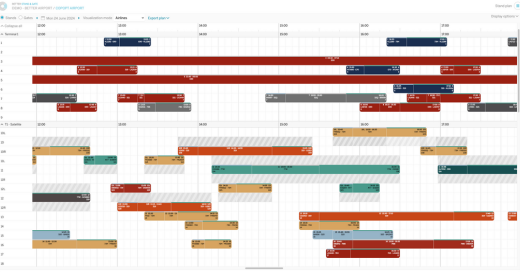News Blog
Copenhagen Optimization makes Australian debut with launch of Better Airport software at Sydney International Airport

Copenhagen Optimization, the world’s leading optimization platform for airport operators, has entered the Australian market with the implementation of software from its Better Airport suite at Sydney International Airport. The company has introduced its modules Better Check-In and Better Stand & Gate in Terminal 1, with Better Stand & Gate later expanded across all terminals.
The modules replaced manual, static planning methods with algorithms that dynamically allocate airport resources such as check-in desks and gates. This shift has enabled the airport to maximize the use of its infrastructure, adapting to changing conditions with greater agility. The software also provided powerful simulation capabilities, allowing airport planners to evaluate the impact of various operational strategies and make informed decisions quickly.
Copenhagen Optimization also addressed a specific request from Sydney Airport regarding the optimization of its bussing operations. This involved developing a customized solution to simulate and improve the bussing schedules and resource allocations, providing a clear framework by considering factors such as peak times, bus capacities, and route efficiencies. The option to simulate various operational scenarios means that airport management is now able to adjust bussing resources in response to daily operational changes and staffing levels. The new tool supports discussions with the third-party bus operators by providing data-driven insights into operational demands and efficiencies, meaning negotiations and resource planning are now more informed.
These changes have resulted in a number of improvements in Sydney Airport’s operational efficiency. The new software have enabled the airport to be more responsive to changes in flight patterns, reducing the impact on operations and passenger experience. With improved planning tools, it has been able to increase the utilization rate of its existing resources, delaying the need for costly infrastructure expansion. In addition, the data-driven approach provided by the solution has given the airport management deeper insights into operational bottlenecks and areas for improvement, thus supporting continuous optimization of processes.
Kasper Hounsgaard, Co-CEO and founder of Copenhagen Optimization, said: “Working in partnership with our partners at Sydney Airport, the implementation of this state-of-the-art technology was carefully managed through a phased approach, starting with a proof of concept that demonstrated the immediate benefits of the software. It was gratifying to see how our ability to adapt and respond to specific operational needs with tailored, effective tools can yield real and measurable improvements for our clients. Our plans for the partnership don’t, however, end there. We look forward to the integration of additional modules and further exploration of real-time operational capabilities to futher enhance efficiency and responsiveness at this important international hub, helping it to remain competitive and capabable of meeting the challenges of the dynamic aviation industry.”
Sydney Kingsford Smith Airport is a crucial transportation hub located in Australia’s most populous city. This airport annually welcomes over 44 million passengers and maintains a robust network of direct flights to major cities worldwide. Its strategic location on Australia’s southeastern coast makes it Australia’s largest gateway for both international and domestic air travel, significantly contributing to its region’s economic and cultural connectivity.